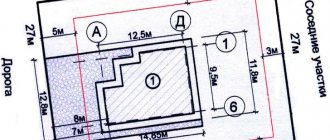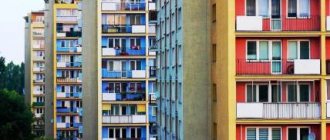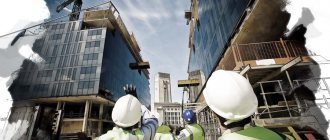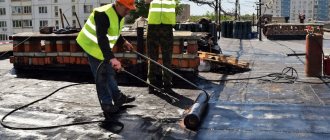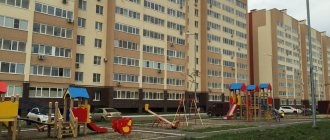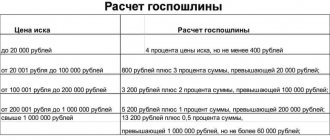Currently, for HOAs there is no question of who should maintain and repair in-house utility networks, including built-in heating units, water pumps, etc. As a general rule, the outer boundary of the electricity, heat, water supply and sewerage networks that are part of the common property is the outer boundary of the wall of an apartment building (clause 8 of the Rules for the maintenance of common property in MKD). The situation is different with engineering infrastructure located outside the walls of the house in the immediate vicinity of the apartment building and intended to serve the house (for example, pumping stations, heating points, transformer substations and corresponding networks to the walls of the house). Who should maintain and repair such infrastructure facilities? First of all, the HOA needs to find out whose property they are, since it is the owners who bear the burden of maintaining the property they own.
Property or not?
The possibility of including external engineering infrastructure in the common property of the apartment building is indicated by sub-clause. “g” clause 2 of the Rules for the maintenance of common property in apartment buildings, according to which the common property, among other things, includes objects intended for the maintenance, operation and improvement of an apartment building, including transformer substations, heating points intended to serve one apartment building, collective parking lots , garages, children's and sports grounds located within the boundaries of the land plot on which the apartment building is located. First of all, let us pay attention to one mandatory condition for including external infrastructure objects in the general property of an apartment building: such an object must be served by only one apartment building . In other words, if a pumping station, heating point or transformer substation supplies water, heat or electricity to two or more houses, they cannot be the common property of any of them, much less the common property of several houses at the same time. This was first pointed out by the Presidium of the Supreme Arbitration Court of the Russian Federation (Resolution No. 14801/08 of December 15, 2009), recognizing that part of the heating networks through which heat is supplied to both a residential building and another building cannot be classified as common property owners of premises in MKD. And in its ruling dated August 2, 2012 No. VAS-9948/12, the Supreme Arbitration Court of the Russian Federation agreed that a water pump designed to serve more than one residential (non-residential) premises in several apartment buildings cannot be classified as a common one. property of the owners of the premises of a single apartment building. It’s another matter if the external infrastructure facility serves only one house. In this case, it can be included in the common property, but only if there are title documents , from which it follows that the apartment building is the owner of the corresponding structure. The courts have repeatedly pointed this out. In particular, 17 AAS, in resolution No. 17AP-18007/15 dated January 29, 2021, directly states that water supply and sewerage networks that provide not only an intra-house water supply and sewerage system, but also a system outside it cannot be included as part of the common property of citizens living in an apartment building in the absence of title documents. The Federal Antimonopoly Service of the Volga-Vyatka District (resolution of January 14, 2021 in case No. A43-1071/2015) recognized that, as a general rule (in the absence of evidence otherwise), networks located outside the external network of an apartment building are not the common property of the residents of this building and should not be serviced by them . In practice, as a rule, it is not possible to find documents that make it possible to recognize engineering infrastructure objects outside the walls of the house as the common property of the HOA, unless, of course, the owners of the apartment building premises have decided to include them in the common property. This is primarily due to the fact that such objects, in accordance with the resolution of the Supreme Council of the Russian Federation of December 27, 1991 N 3020-1 “On the division of state property in the Russian Federation into federal property, state property of republics within the Russian Federation, territories, regions, autonomous regions , autonomous okrugs, cities of Moscow and St. Petersburg and municipal property" are transferred to the municipal property of the cities (regardless of whose balance sheet they are on). This was also pointed out by the Supreme Arbitration Court of the Russian Federation, confirming that urban engineering infrastructure facilities are intended to resolve issues of local importance and, accordingly, belong to municipal property, while their absence in the list of municipal property objects cannot be the basis for assigning the responsibility for their maintenance to others persons (determination of the Supreme Arbitration Court of the Russian Federation dated December 12, 2013 N VAS-17112/13). Despite the above, in some cases, HOAs may have operational responsibility for utility infrastructure outside the walls of the building.
How to attract a management company for improper provision of services?
Managers can be held accountable for unscrupulous work just like any other organization. If the management company poorly fulfills its responsibilities for managing and maintaining the housing entrusted to them, then they will face various penalties.
The basis for this can be both laws, namely PP dated May 6, 2011, number 354, and clauses of the agreement concluded between the company and the residents.
In case of obvious violations on the part of the management company, residents have the right to demand the drawing up of reports on poor-quality services provided, recalculation of the established fee, and holding the management company accountable. Also, any resident can demand that the management company pay penalties and fines on the basis of Federal Law N2300-1 “On the Protection of Consumer Rights.”
Administrative responsibility
The Code of Administrative Offenses of the Russian Federation provides for penalties for criminal codes in the following cases:
- misinformation of owners or concealment of information (Article 13.19.1 of the Administrative Code) - a fine in the amount of 30 to 50 thousand rubles;
- non-compliance with the criteria for the provision of public services (Article 7.23) - a fine of 5 to 10 thousand rubles;
- if the management company’s employees mess up something in maintaining technical documentation or refuse to provide it (Article 7.23.2) - a fine of 150 to 200 thousand rubles;
- neglect of sanitary and epidemiological requirements (Articles 6.4 and 6.5): if we are talking about the operation of premises - a fine of 10 to 20 thousand rubles or suspension of the activities of the management company for up to 90 days; in case of violation of the requirements for drinking water, as well as for drinking and domestic water supply - a fine of 20 to 30 thousand rubles, or also suspension of the activities of the management company for up to 90 days;
- repair and maintenance (Article 7.22) - a fine of 40 to 50 thousand rubles;
- violation of the rules of business activity (Article 7.23.3) - a fine of 150 to 250 thousand rubles.
Criminal
If the Criminal Code decides to punish residents by suddenly cutting off their supply of vital resources - water, electricity, heat or gas, and it turns out that someone actually suffered from this, then according to Article 215.1 of the Criminal Code of the Russian Federation, the company’s actions can also be qualified as criminal violation .
HOA operational responsibility
According to clause 8 of the Rules for the maintenance of common property in apartment buildings, the boundary of operational responsibility in the presence of a collective (common building) metering device is the place of connection of the collective (common building) metering device with the corresponding utility network included in the apartment building, unless otherwise established by agreement of the owners of the premises with the utility contractor services or resource supplying organization . Thus, in the general case, the operational responsibility of the HOA is limited to the point of connection of the common building metering device with the corresponding utility network. In order for these boundaries to be expanded and external engineering infrastructure objects to be included in the area of operational responsibility of the HOA, an agreement between the owners and the management company or the relevant resource supplying organization is required . The conclusion that the basis for expanding the operational responsibility of apartment buildings in relation to utility networks from the wall of the house is the expression of the will of the authorized owners of premises in an apartment building to determine the composition of the common property of an apartment building, was made, in particular, in the determination of the Investigative Committee for Economic Disputes of the Armed Forces of the Russian Federation dated December 21 2015 N 305-ES15-11564. Also, premises owners can expand the boundaries of operational responsibility by authorizing (by voting) the signing by the HOA of the corresponding Act on the delimitation of operational responsibility when drawing up an agreement with a resource supplying organization. In the absence of a decision by the owners of premises in the apartment building to move the external boundary of the resource supply networks, the operational responsibility of the HOA does not extend to external utility networks (see, for example, the resolution of the AS of the Ural District dated February 24, 2021 in case No. A60-8001/2015, AS East Siberian District dated January 14, 2021 in case No. A10-1566/2015).
Ownerless utility networks.
Unfortunately, in practice there are often cases when utility networks are not within the area of responsibility of either party to the resource supply agreement, that is, they are ownerless. In this case, who should maintain these networks and pay for the loss of utility resources in them?
Clause 4 of Art. 8 of the Law on Heat Supply defines: if organizations carrying out regulated types of activities in the field of heat supply operate heating networks, the owner or other legal owner of which has not been identified (ownerless heating networks), the costs of maintenance, repair and operation of such heating networks are taken into account when setting tariffs in relation to these organizations in the manner prescribed by the principles of pricing in the field of heat supply, approved by the Government of the Russian Federation.
In accordance with paragraph 6 of Art. 15 of the Law on Heat Supply, in the event of identification of ownerless heating networks (heating networks that do not have an operating organization), the local government body of a settlement or urban district, before recognizing the ownership of the specified heating networks, within 30 days from the date of their identification, is obliged to determine the heating network organization whose heating networks directly connected to these heating networks, or a single heat supply organization in the heat supply system, which includes such heating networks and which carries out their maintenance and service. The regulatory authority must include the costs of maintenance and servicing of ownerless heating networks in the tariffs of the relevant organization for the next regulatory period.
According to clause 55.1 of the Guidelines for calculating regulated tariffs and prices for electric (heat) energy in the retail (consumer) market, approved by Order of the Federal Tariff Service dated 08/06/2004 No. 20-e/2 (as amended by the Order dated 07/31/2007 No. 138-e/6), if the costs of operating ownerless networks are not taken into account when setting tariffs, the consumer of electrical energy connected to ownerless networks pays for losses of electrical energy in these networks in proportion to his actual power consumption.
Thus, if the section of networks between the wall of the MKD and the networks of the RSO is ownerless, when setting the tariff for the RSO, the Federal Tariff Service must include the costs of maintenance, repair and operation of this section of the networks. Until the costs of operating an ownerless section of the network are included in the tariff, energy losses in this section must be paid by the management company in proportion to actual consumption. In particular, in the Resolution of the Federal Antimonopoly Service of the Moscow Region dated January 11, 2011 No. KG-A41/14529-10, the court came to the conclusion that the consumer is obliged to pay the cost of thermal energy losses in an ownerless section of the heating network in proportion to the actual consumption by other consumers. But at the same time, the responsibility for operating and incurring costs for these networks arises with the RSO.
How to get rid of “extra” responsibilities?
Often, homeowners associations sign agreements with resource supply organizations “automatically”, believing that the agreement is standard, and they still won’t be able to change anything.
And at the same time, they draw up an Act on the Separation of Operational Responsibilities, according to which responsibility for external infrastructure facilities falls on the shoulders of the owners. This usually happens when such facilities are not owned by municipalities, and the corresponding resource supply organization is not charged with servicing them. In order to get rid of unnecessary expenses and restore justice, the HOA can apply to the City Administration (or to the court) with an application to recognize the objects as ownerless with their subsequent transfer to municipal ownership. It is also possible to challenge in court the Act of delimitation of operational responsibility by proving that the disputed objects are not the property of the HOA, and the owners of the apartment building premises did not make any decisions either on their inclusion in the common property or on expanding the boundaries of operational responsibility. If the HOA attracted a management company, which, in its interests, concluded such an unfavorable agreement and paid for it at the expense of the owners of the apartment buildings, you can also demand the return of the unjustifiably spent money of the owners of the premises for the previous three years. The article was published in the magazine “Chairman of the HOA” No. 6 for 2016.
Unlock access to the private part of Clerk with a Premium subscription. Get hundreds of webinars and online courses, unlimited consultations and other proprietary content for accountants.
Hurry up to subscribe with a 20% discount until October 15, 2021. Read more about “Premium” here.
What will affect the work of management organizations in 2021
The lecturers on the second day of the final conference were Elena Shereshovets, head of the Expert Council of the Association of Professional Real Estate Managers “P1”, Sergey Sergeev, lawyer of the Arbat MCA, and Yuri Netreba, head of the judicial defense practice of the Arbat MCA.
A story about adopted laws and bills during discussion, established judicial practice and resolution of disputes about OSS will help you prepare for work next year.
Watch the demo video on the YouTube channel of the P1 Association →



